Syracuse has a new museum. In fact, in the heart of Ortigia, just a few meters from Piazza Duomo, SIRAMUSE, the Multimedia Museum of the Stories of Syracuse, opens, a project that aims to restore a new identity and function to the Montevergini Complex, a symbolic place of the city’s culture. The space, which between the 1990s and 2000s was a center of contemporary artistic production and hosted exhibitions by authors such as Enzo Cucchi and Ettore Sottsass, is now transformed into a museum of storytelling, capable of interweaving historical memory and reflection on present-day issues.
Conceived and curated by Civita Sicilia, SIRAMUSE was created as a museum that narrates the city starting from its most ancient roots, interweaving the signs of the past with contemporary issues such as violence against women and environmental protection. The itinerary, designed for a wide and diverse audience, is intended as an immersive and inclusive experience, supporting a new idea of sustainable and participatory cultural tourism.
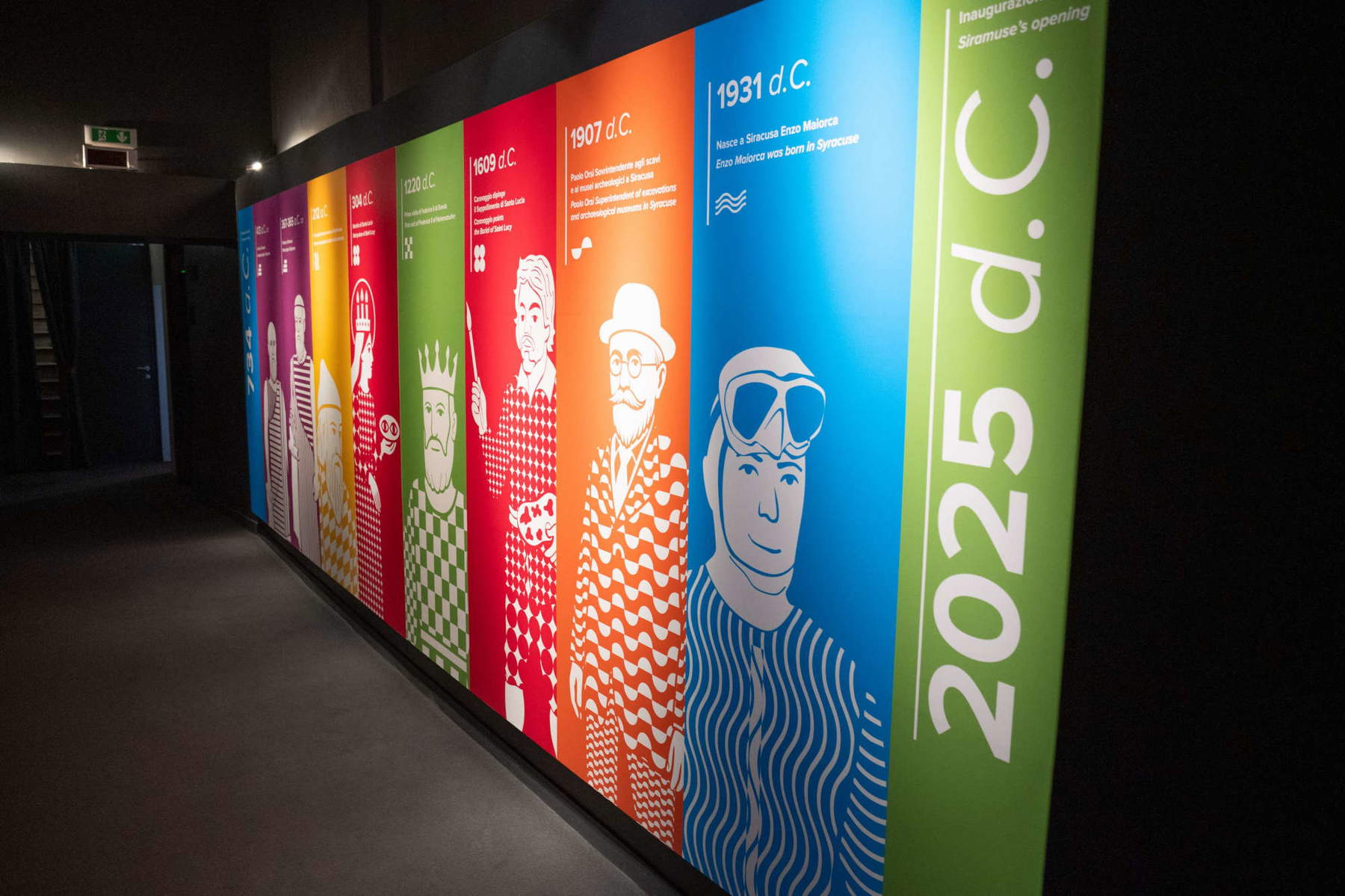
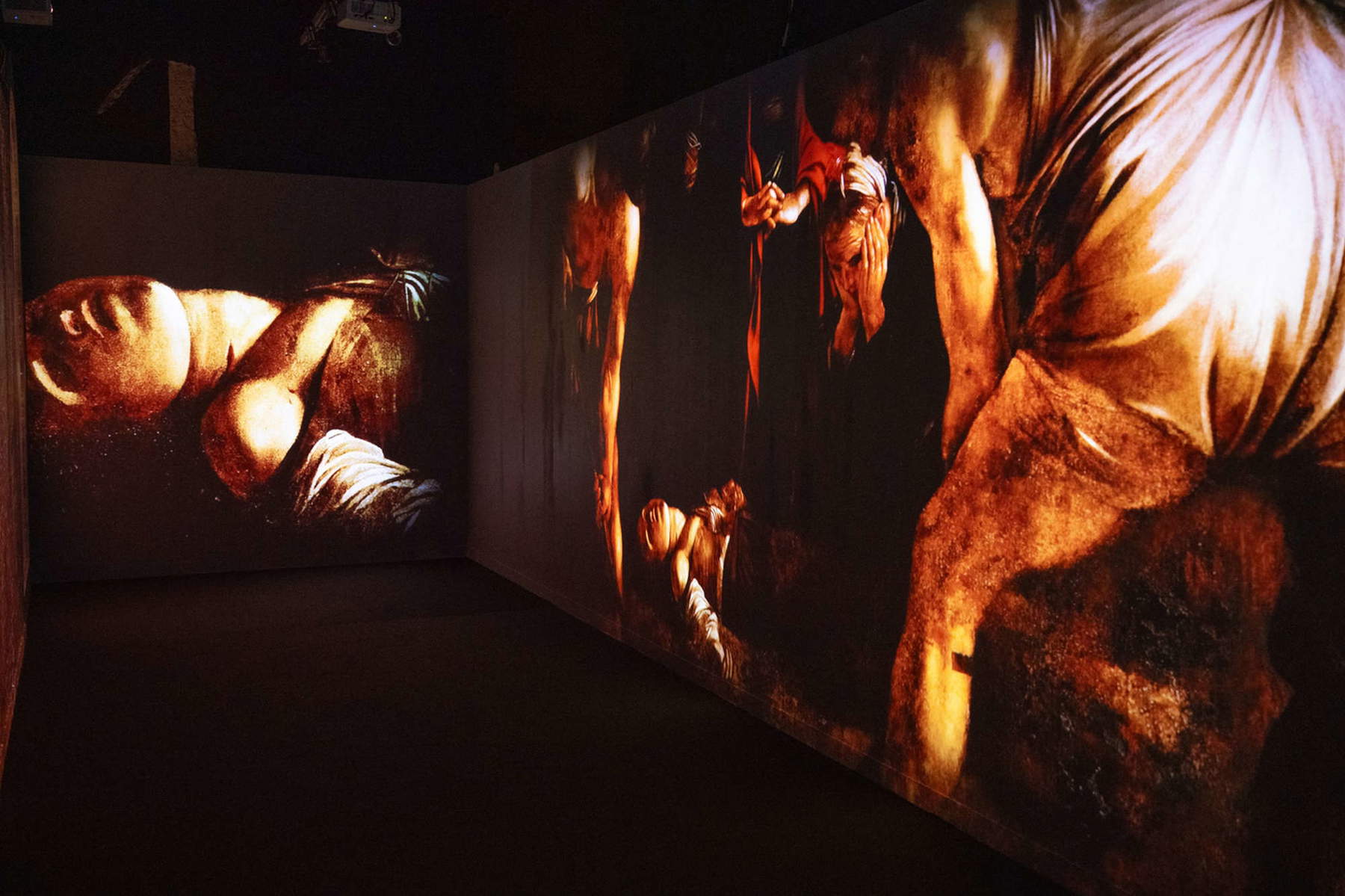
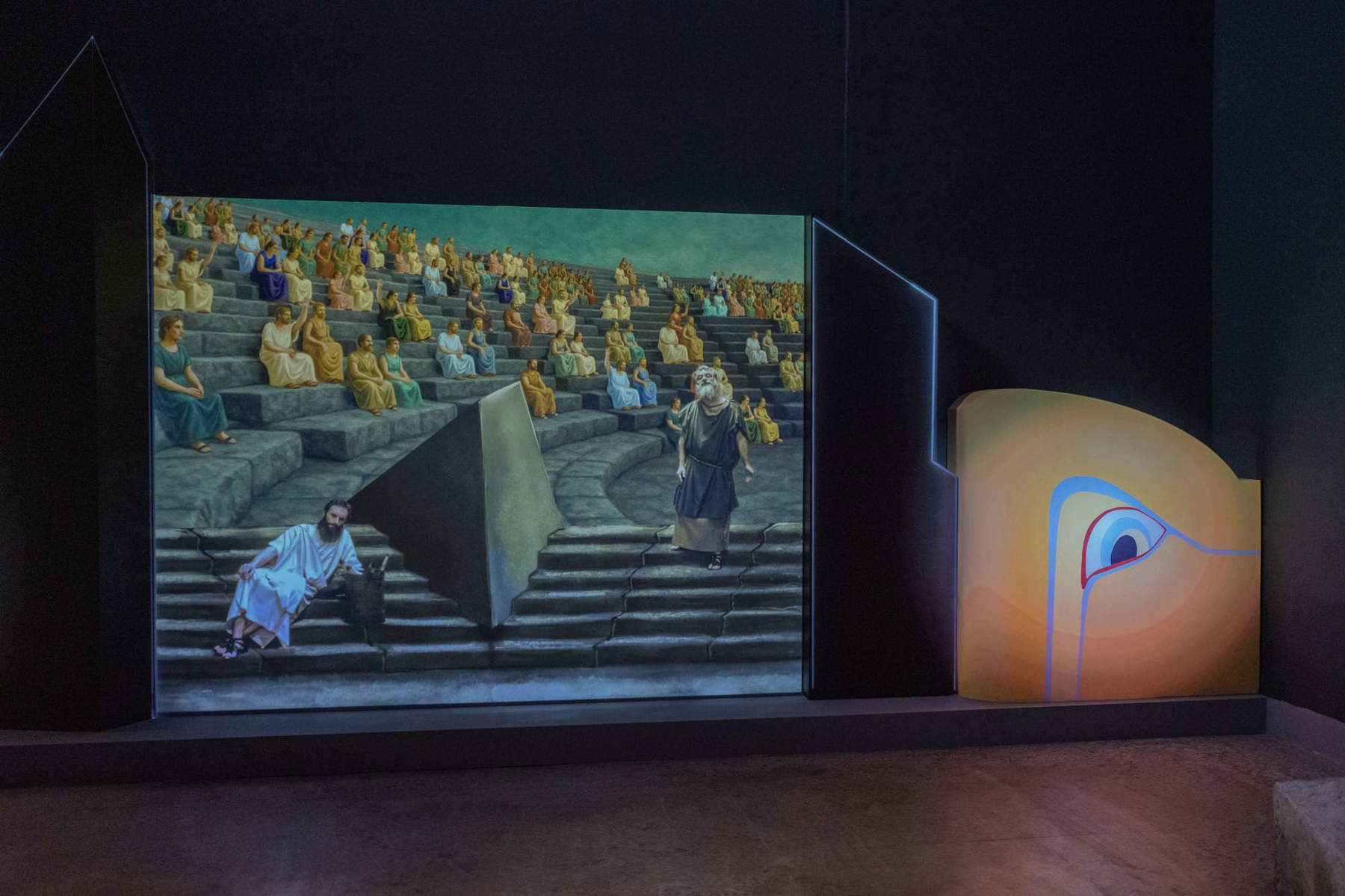
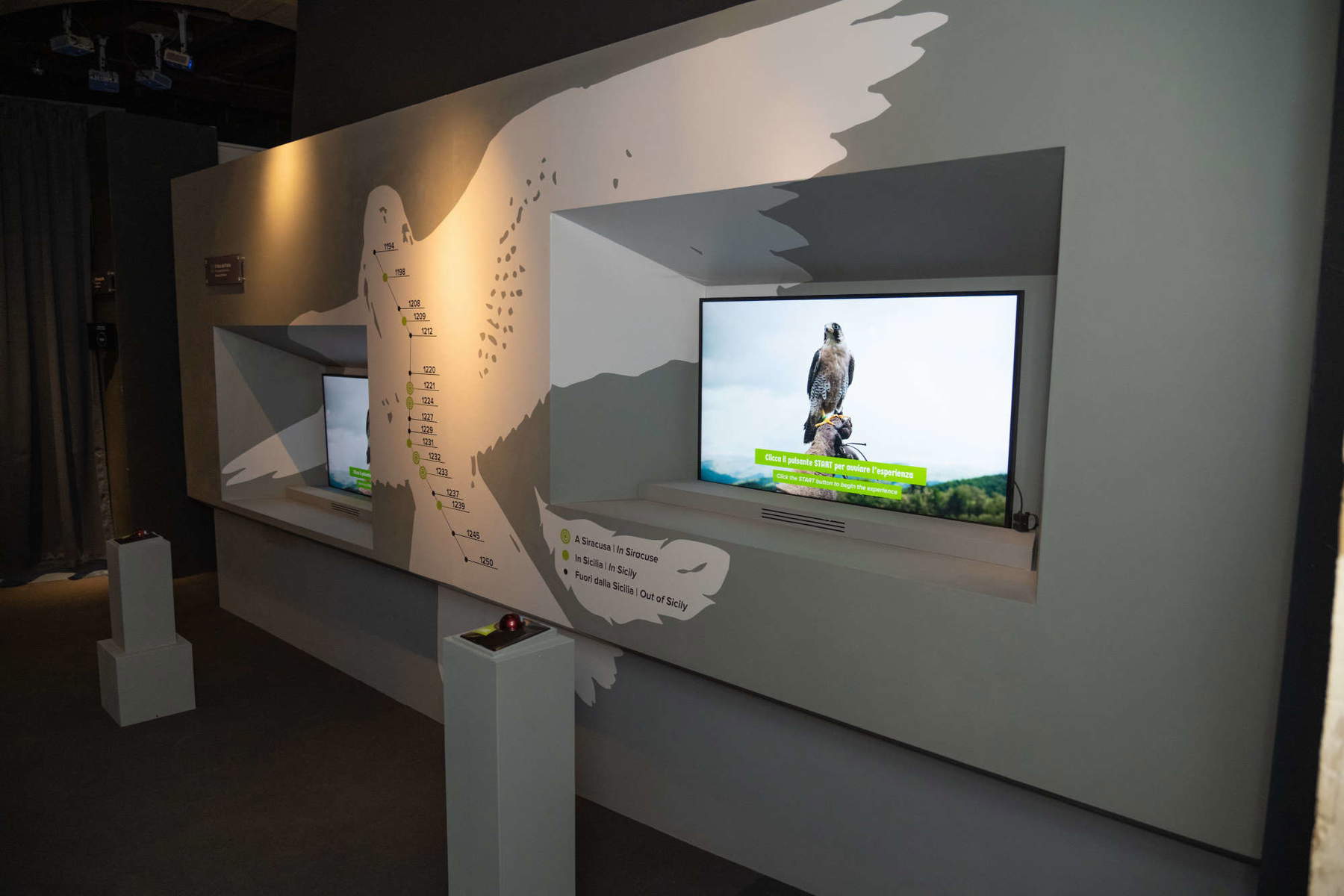
SIRAMUSE aims to be not just a museum, but a cultural hub and a starting point for discovering Syracuse and its widespread heritage. The project, which interprets the guidelines of international bodies such as UNESCO and Icom, aims to offer a unified narrative of Syracuse’s cultural heritage, extending its significance beyond the physical boundaries of the city.
The exhibition is divided into six thematic areas, each dedicated to an aspect of Syracuse’s history and the figures who embody its spirit. Through eight historical and symbolic figures, the city takes on a voice and is told through visual, sound and technological languages, combining museum and spectacular dimensions.
The first section, The Light and the Apparition, is dedicated to the cult of St. Lucy and the immersion in Caravaggio’s work, The Burial of St. Lucy, preserved in the Shrine of St. Lucy at the Sepulchre. The multimedia experience alternates between projections and actor performances that reconstruct the history of the young Syracusan martyr under the Diocletian empire, her iconography over the centuries and the traditions that animate the city on Dec. 13, the day of her celebration. Visitors are guided on a visual and aural journey that interweaves art, faith and popular culture.
The second area, Science, pays tribute to Archimedes, the great Syracusan genius, mathematician, physicist and inventor. In an enveloping room, fourteen projectors animate the walls with historical and biographical reconstructions, bringing his inventions and Archimedean machines to life. The story, which stages the famous defense of Syracuse against the Romans, invites reflection on the relationship between science and power, individual ingenuity and collective destiny. Archimedes, an emblematic figure of applied knowledge, emerges not only as a scientist but as a symbol of the intelligence that resists the forces of conquest and destruction.
The Theater and Political Tribune represents the third moment of the journey. Here, in a scenic space that echoes the form of the archaic cavea of the Greek theater in Syracuse, technology meets performance. The visitor witnesses the imaginary encounter between Plato and Aeschylus, two voices that embody the birth of theatrical thought and art. The reflection on art as deception and truth, on theater as a collective and civic experience, restores the highest dimension of Syracuse culture as a place of dialogue between philosophy and performance.
The fourth section, The Excavation, is dedicated to the figure of Paolo Orsi, the archaeologist who more than any other contributed to the knowledge of Syracuse’s past. Through his voice and first-person narration, the visitor is introduced to the experience of archaeology as an intellectual and human adventure. The playful-exploratory installation allows visitors to touch reproductions of artifacts that evoke objects preserved in the Paolo Orsi Regional Archaeological Museum, offering a summary of the city’s material history from the Bronze Age to the late Roman Empire.
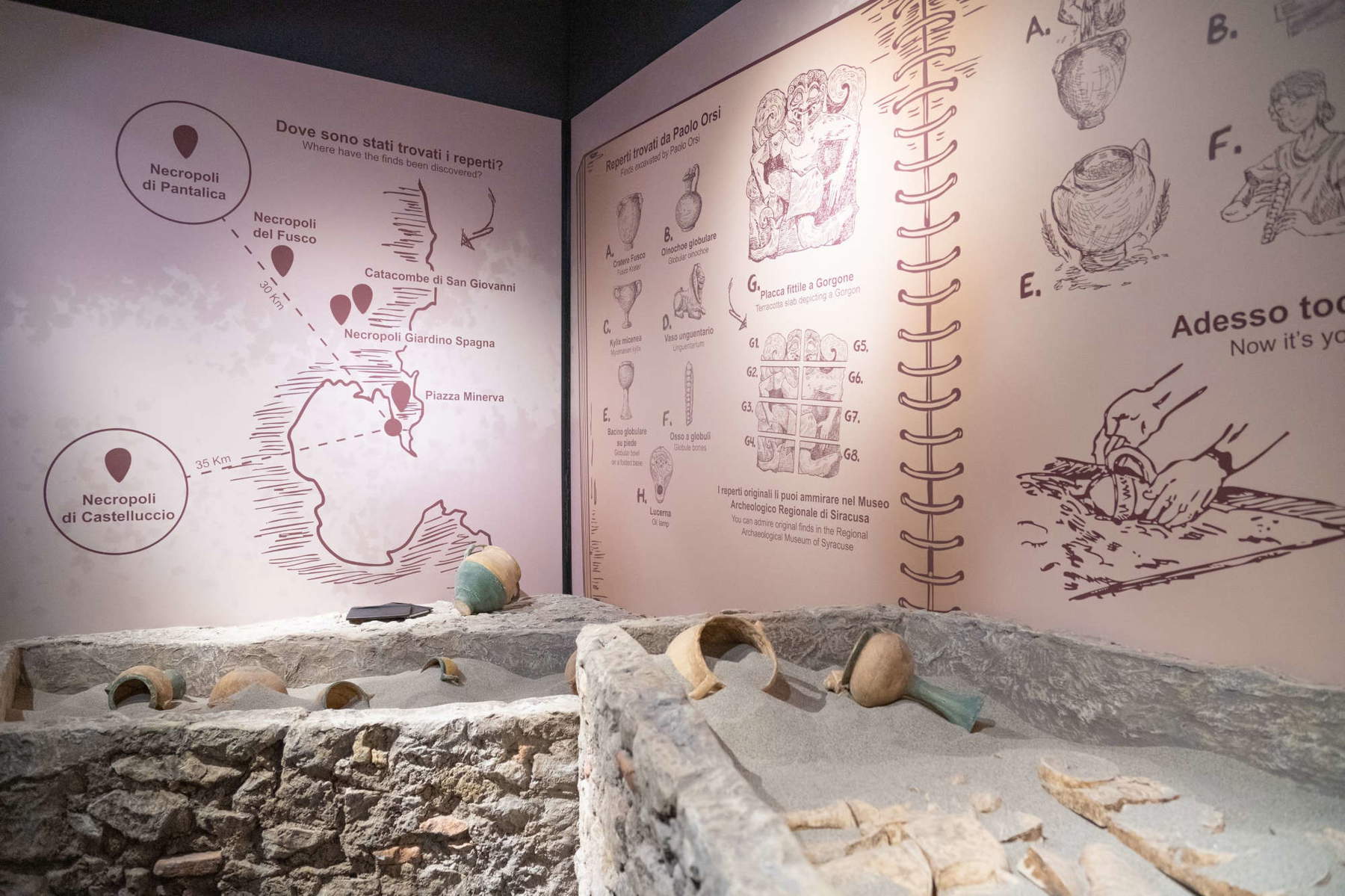
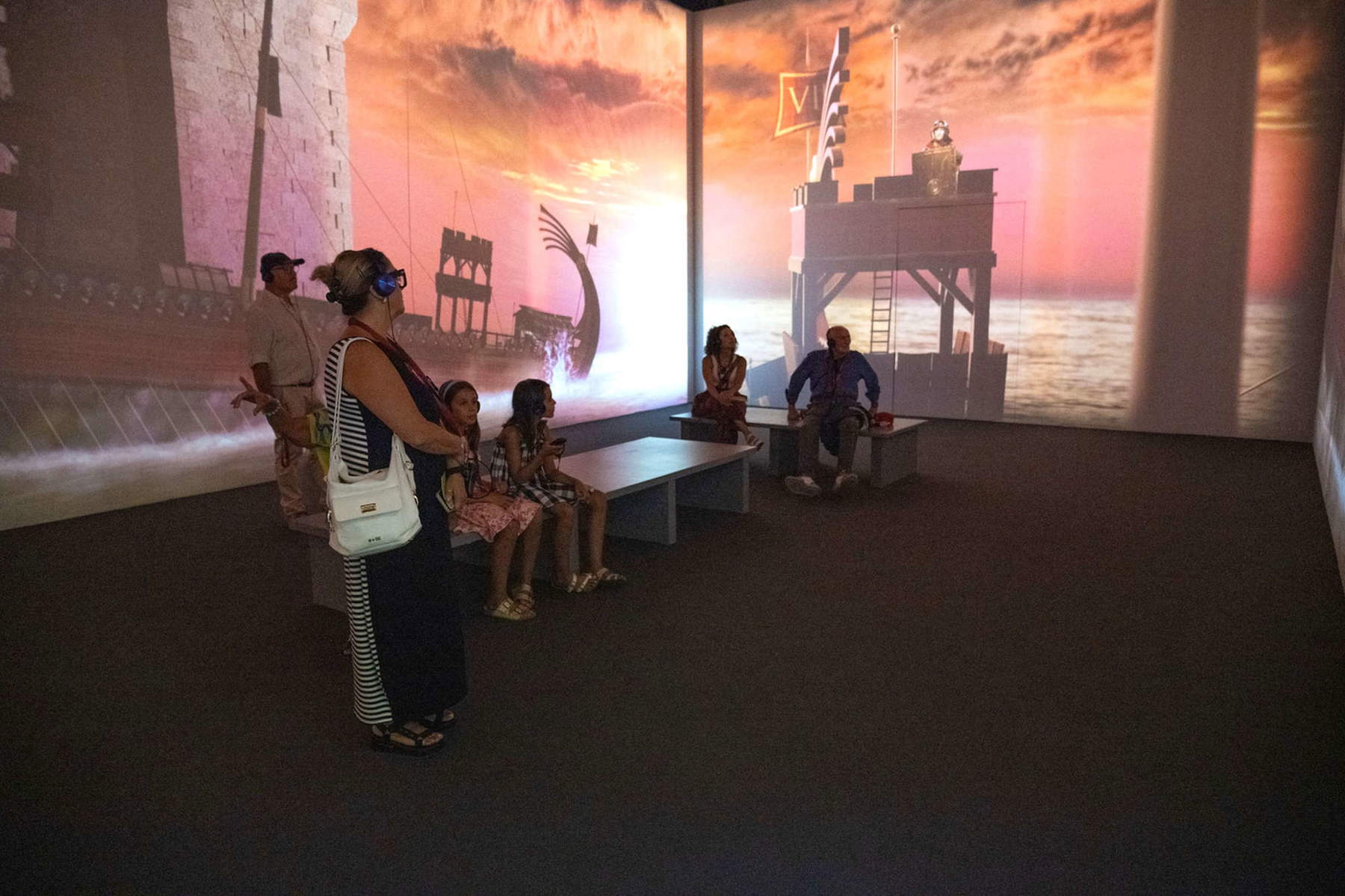
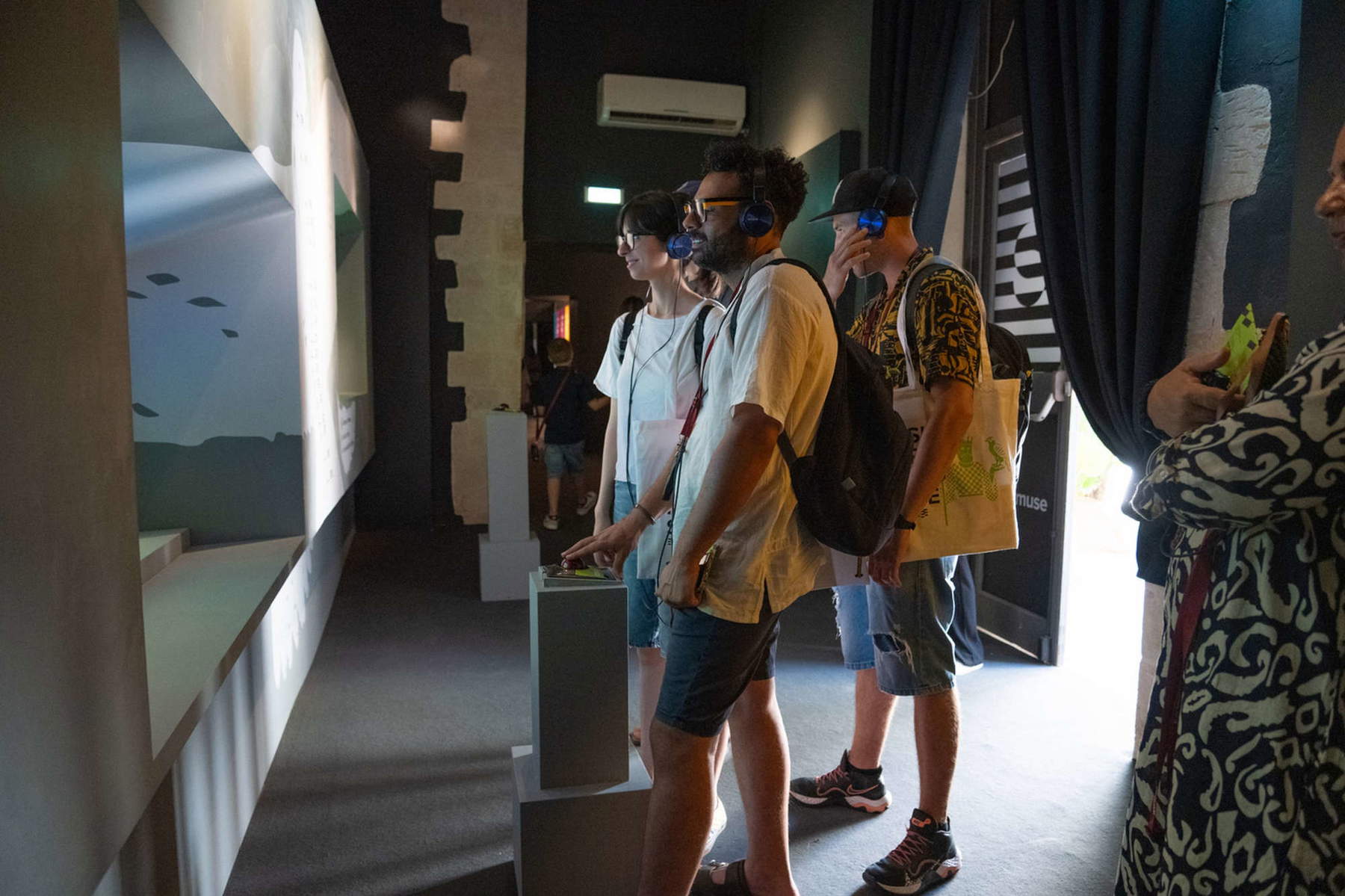
Frederick II’s Flight of the Falcon follows, in which the figure of the Swabian emperor is told in the first person. Through immersive techniques and a double window of interactive gaming, visitors enter the world of Frederick II, discovering his love for falconry-now recognized by UNESCO as an intangible cultural heritage-and his innovative political and cultural vision. Images filmed in the Maniace Castle and at the Fountain of Arethusa restore the symbolic power of a Sicily that, in Frederick’s court, became a crossroads of cultures, languages and knowledge.
The last area, Il Profondo Blu (The Deep Blue), is a tribute to the sea and to Enzo Maiorca, the great Syracusan freediving champion who made depth a territory of inner knowledge. On a large circular screen, marine images move in response to visitors’ gestures, creating an interactive and immersive environment. The filmic reconstruction of one of Mallorca’s diving records becomes an opportunity for reflection on the environment and the relationship between human beings and nature, in line with the principles of sustainability that run through the entire project.
The museum is the result of extensive interdisciplinary work. Alongside Civita Sicilia, which handled conception and production, figures from the academic and artistic world collaborated. The brand identity project is signed by graphic designer Francesca Pavese, who involved students from the Made Program’s Graphic Design course, the “Rosario Gagliardi” Academy of Fine Arts in Syracuse, in a participatory workshop. Museologist and art historian Anna Villari oversaw the implementation, while a scientific committee of experts supported the design phases, ensuring the rigor of the content. They included Monica Centanni, scholar of ancient theater; Giovanni Di Pasquale, deputy scientific director of the Galileo Museum in Florence; Lorenzo Guzzardi, archaeologist; Patrizia Maiorca, president of the Plemmirio Marine Protected Area; Giuseppe Piccione, former president of the Deputation of the Chapel of Santa Lucia; Lucia Trigilia, director of the International Center for Baroque Studies; and Cettina Pipitone Voza, essayist and Archimedes scholar.
The inclusive and accessible dimension is at the heart of the project: each installation is designed to ensure enjoyment by a diverse audience, with routes also suitable for schools and families. The museum offers self-guided tours, in multiple languages, with audio guides in Italian, English, French and Spanish. The goal is to offer an accessible yet high-quality cultural experience that engages citizens and international visitors alike.
SIRAMUSE is located at 4 Via Santa Lucia alla Badia, a short walk from Piazza Duomo. The museum is open daily from May to September from 11 a.m. to 7 p.m., while from October to April the hours are from 10 a.m. to 5 p.m., closing on Tuesdays. In the winter period between January and February, opening is by reservation for schools and groups, and on weekends. Entrance fees are 12 euros for a full ticket, 8 euros for young people aged 6 to 25 and residents, and 6 euros for schools. There is free admission for families and free admission for children under six, Icom members, people with disabilities and accompanying persons, tour guides and accredited journalists. It is possible to supplement the visit with access to the Artemision, an archaeological site located a hundred meters from the museum, for an additional charge of two euros.
 |
| SIRAMUSE, the multimedia museum of Syracuse stories in the heart of Ortigia, is born |
Warning: the translation into English of the original Italian article was created using automatic tools. We undertake to review all articles, but we do not guarantee the total absence of inaccuracies in the translation due to the program. You can find the original by clicking on the ITA button. If you find any mistake,please contact us.